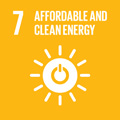- Docente: Alberto Credi
- Credits: 4
- SSD: CHIM/03
- Language: Italian
- Teaching Mode: In-person learning (entirely or partially)
- Campus: Bologna
- Corso: Second cycle degree programme (LM) in Industrial Chemistry (cod. 6066)
-
from Sep 29, 2025 to Dec 16, 2025
Learning outcomes
Provide the basic concepts and illustrate the main strategies for the bottom-up construction of functional nanostructures, that is, starting from molecular building blocks and using the paradigms of supramolecular chemistry. Examples of host-guest complexes, supramolecular polymers, dendrimers, nanoparticles, surface monolayers and thin films, nanostructured solids, and molecular devices and machines will be considered. The experimental techniques commonly employed in the field of supramolecular chemistry and molecular nanoscience will be described.
Course contents
Prerequisites
Knowledge of the fundamental concepts of spectroscopy, photochemistry and electrochemistry.
Contents
The course deals with the following topics; for each one the general principles and some significant examples are described.
1. Introduction
1.1. Top-down approach to miniaturization: photolithographic techniques
1.2. Bottom-up approach: molecular self-assembly
1.3. Fundamentals of supramolecular chemistry
1.3. Molecular devices
1.4. What is nanotechnology?
2. Self-assembled nanostructures
2.1. Common macrocyclic hosts and their host-guest complexes
2.2. Self-assembled capsules, cages, polymers, vesicles, and other structures
2.3. Self-assembled molecular monolayers on surfaces
3. Multicomponent molecular species
3.1. Nanosystems with complex topologies: rotaxanes, catenanes, knots, and related species
3.2. Dendrimers: synthesis, properties and applications
3.3. Dynamic covalent systems
4. Chemical functionalization of surfaces
4.1. Langmuir-Blodgett films
4.2. Functional self-assembled monolayers
4.3. Characterization and imaging of surfaces
5. Nanomaterials
5.1. Size effects and quantum confinement
5.2. Metal nanoparticles
5.3. Semiconductor nanoparticles (quantum dots)
5.4. Carbon-based nanomaterials: fullerenes, nanotubes, graphene
5.5. Nanoporous materials: zeolites, metal-organic and covalent organic frameworks
6. Mechanical molecular machines and motors
6.1. Basic concepts
6.2. Biomolecular machines: motor proteins
6.3. Artificial systems based on topologically complex species
6.4. Artificial systems based on DNA
6.5. Other examples
6.6. Applications
Readings/Bibliography
The course covers advanced topics of great scientific relevance and therefore constantly evolving. It is essential to use the materials provided by the professor before the start of the course: slides shown in class, scientific articles to be used both for general learning and for in-depth study of specific topics. This material is available through the University repository, https://virtuale.unibo.it/; access is via @studio.unibo.it account credentials. There is no single textbook that covers the entire syllabus; the following texts are recommended for general learning and in-depth study of parts of the course:
- J.-M. Lehn, Supramolecular Chemistry – Concepts and Perspectives, VCH, Weinheim, 1995 (parts 1, 2, and 4 of the syllabus).
- V. Balzani, A. Credi, M. Venturi, Molecular Devices and Machines – Concepts and Perspectives for the Nanoworld, Wiley-VCH, Weinheim, 2008 (parts 1, 3, 6).
- D. S. Goodsell, The Machinery of Life, 2nd Ed. Copernicus, New York, 2009 (parts 1 and 6).
- C. N. R. Rao, A. Muller, A. K. Cheetham (Eds.), The Chemistry of Nanomaterials, Vol. 1 and 2, Wiley-VCH, Weinheim, 2004 (parts 1 and 5).
Teaching methods
Classroom lectures with the aid of slides (in English, provided to students in advance), supported by literature articles, simulations and animations.
Assessment methods
The sssessment, which aims to verify the acquisition of the expected knowledge, is conducted through a final exam, which consists of an oral test with an approximate duration of 15 minutes. The exam consists of a presentation on a topic chosen by the student from those covered in the course, followed by a brief discussion with the professor. The evaluation of the oral exam will be based on the knowledge of the chosen topic, clarity of exposition, and language articulation. A score of at least 18/30 is required to pass the exam.
Students with learning disabilities (LD) or temporary or permanent disabilities are advised to contact the University office in advance, which can advise them on any exam adaptations. These adaptations must be submitted to the instructor for approval at least 15 days before the exam date, who will evaluate their suitability, also taking into account the course's learning objectives.
Teaching tools
The lessons are conducted with the aid of Powerpoint slides and the blackboard.
Office hours
See the website of Alberto Credi
SDGs




This teaching activity contributes to the achievement of the Sustainable Development Goals of the UN 2030 Agenda.
